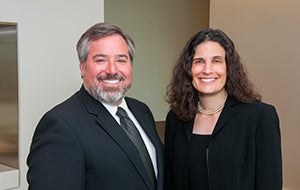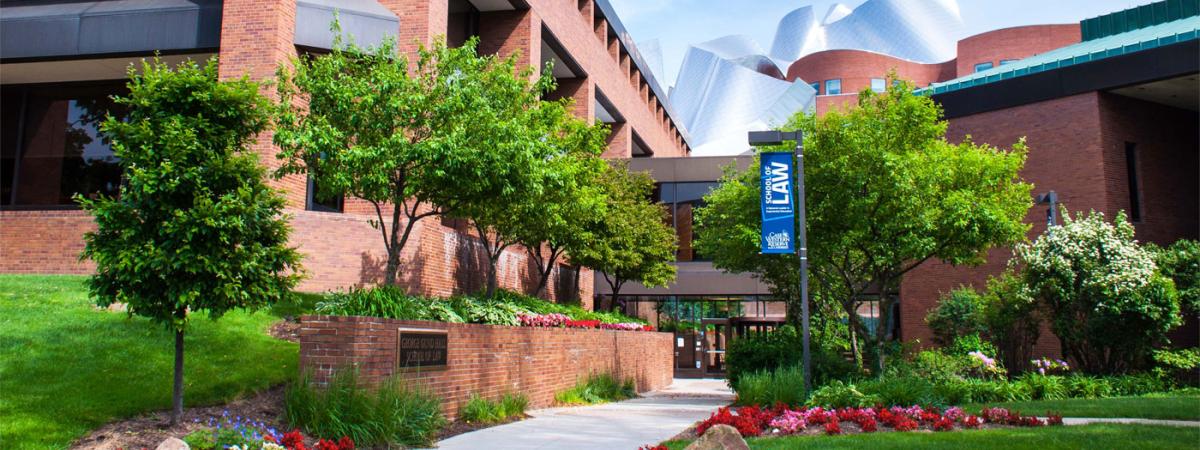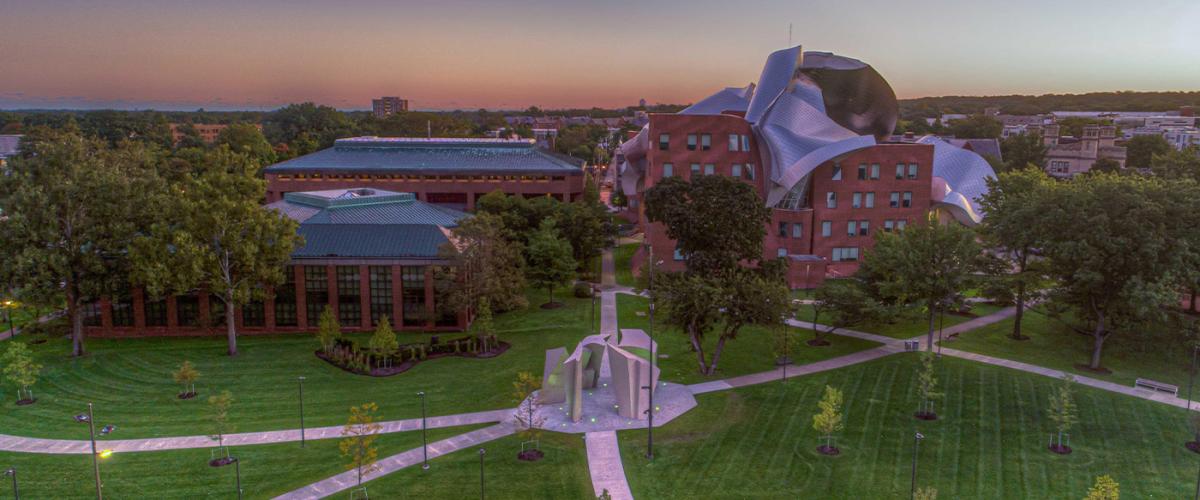Case Western Reserve’s overhaul of how it prepares law students reaped impressive results this year, as its graduates posted a 93 percent passage rate on Ohio’s July bar examination.
The figure—for first-time test-takers—bested every other law school in the state, with the margin ranging from 6 to 30 percentage points.
 Co-Deans Michael Scharf and Jessica Berg
“Our students’ outstanding performance is first a testament to their intellects and dedication,” Co-Deans Jessica Berg and Michael Scharf said in a statement, “and also to the wisdom and hard work of faculty who updated and enhanced our coursework. Together, they have helped make the school a top destination for students in Ohio and across the country.”
The 2017 graduating class was the first to complete all three years of the revamped curriculum, which dramatically increased hands-on learning opportunities. Experiential education begins in a student’s first year, and continues through to a senior capstone. At the same time, students continue to participate in core foundational classes, whose concepts feature prominently on the bar exam. This integrated approach provides a more rigorous and comprehensive education, the co-deans explained.
In addition, the school launched several initiatives specifically targeted toward improving the bar-passage rate, among them:
Co-Deans Michael Scharf and Jessica Berg
“Our students’ outstanding performance is first a testament to their intellects and dedication,” Co-Deans Jessica Berg and Michael Scharf said in a statement, “and also to the wisdom and hard work of faculty who updated and enhanced our coursework. Together, they have helped make the school a top destination for students in Ohio and across the country.”
The 2017 graduating class was the first to complete all three years of the revamped curriculum, which dramatically increased hands-on learning opportunities. Experiential education begins in a student’s first year, and continues through to a senior capstone. At the same time, students continue to participate in core foundational classes, whose concepts feature prominently on the bar exam. This integrated approach provides a more rigorous and comprehensive education, the co-deans explained.
In addition, the school launched several initiatives specifically targeted toward improving the bar-passage rate, among them:
 Co-Deans Michael Scharf and Jessica Berg
“Our students’ outstanding performance is first a testament to their intellects and dedication,” Co-Deans Jessica Berg and Michael Scharf said in a statement, “and also to the wisdom and hard work of faculty who updated and enhanced our coursework. Together, they have helped make the school a top destination for students in Ohio and across the country.”
The 2017 graduating class was the first to complete all three years of the revamped curriculum, which dramatically increased hands-on learning opportunities. Experiential education begins in a student’s first year, and continues through to a senior capstone. At the same time, students continue to participate in core foundational classes, whose concepts feature prominently on the bar exam. This integrated approach provides a more rigorous and comprehensive education, the co-deans explained.
In addition, the school launched several initiatives specifically targeted toward improving the bar-passage rate, among them:
Co-Deans Michael Scharf and Jessica Berg
“Our students’ outstanding performance is first a testament to their intellects and dedication,” Co-Deans Jessica Berg and Michael Scharf said in a statement, “and also to the wisdom and hard work of faculty who updated and enhanced our coursework. Together, they have helped make the school a top destination for students in Ohio and across the country.”
The 2017 graduating class was the first to complete all three years of the revamped curriculum, which dramatically increased hands-on learning opportunities. Experiential education begins in a student’s first year, and continues through to a senior capstone. At the same time, students continue to participate in core foundational classes, whose concepts feature prominently on the bar exam. This integrated approach provides a more rigorous and comprehensive education, the co-deans explained.
In addition, the school launched several initiatives specifically targeted toward improving the bar-passage rate, among them:
- requiring second- and third-year students to take four of six bar-tested subjects not covered in the first year;
- having examinations in bar-tested courses be “closed book” so that students become more familiar with the testing conditions of the bar exam; and
- encouraging faculty teaching bar-tested courses to add mid-term tests and other periodic assessments, rather than only a single final exam.




